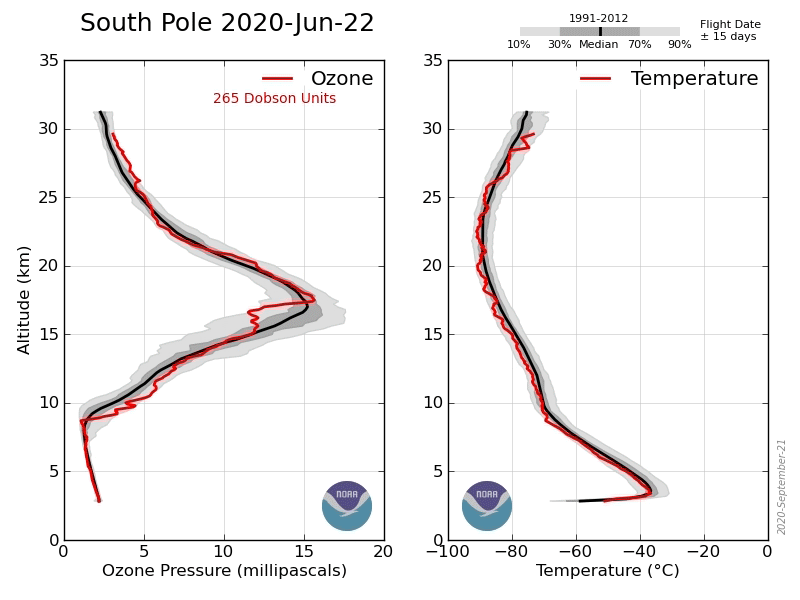
As the frigid “Polar Vortex” remains surprisingly stable and centered over Antarctica, NOAA researchers stationed at the Amundsen-Scott South Pole Station continue monitoring the “Ozone Hole” situated overhead. Continued vortex stability means that fresh air from the mid-latitudes has yet to break through this atmospheric barrier and fill in the annual depletion event. Balloons launched every three days to over 100,000 feet (30km) above Antarctica continue to see regions of complete ozone destruction throughout the critical Ozone Layer. This is in stark contrast to last year when unusual instability led to the vortex breaking apart before the annual depletion event even got started. This year will be helpful to scientists trying to determine the progress of recovery. When the world came together in 1987 to phase out production of chemicals harmful to the Earth’s protective Ozone Layer, we knew that it would take decades for the process to reverse itself. NOAA scientists watch each September and October as the process unfolds to try and determine if we’ve officially turned that corner and begun recovery. This year, it will be interesting to analyze how the process developed under near “ideal” atmospheric conditions for destruction to take place.
